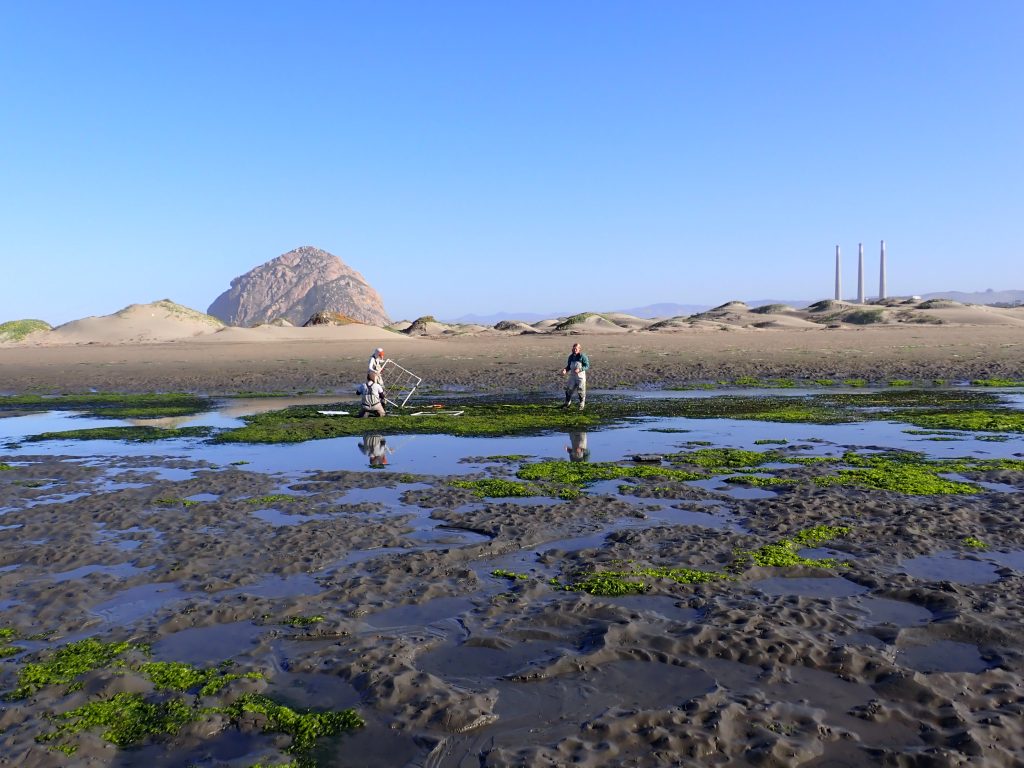
When the tide gets low, the Estuary Program gets going
The return of the spring low tides exposes parts of the estuary that remain covered by water for the majority of the year, including portions of eelgrass beds. During these large tidal swings, the Estuary Program gears up for surveys to assess the health of several of these beds at established monitoring locations. Both the restoration and monitoring teams take advantage of this opportunity and can often be spotted paddling across the channel to access monitoring sites.
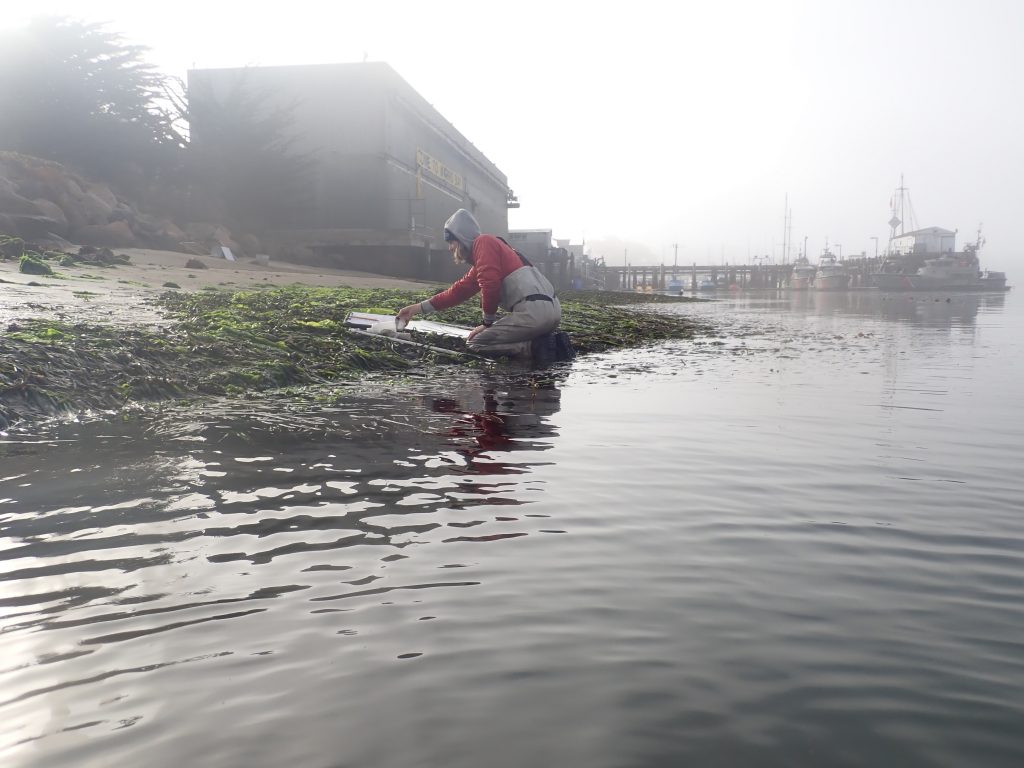
One of the projects we conduct during this time frame is Bed Condition Monitoring, which uses measurements of blade length, eroded tissue, and the presence of small plants and animals clinging to the blades (called epiphytes and epifauna, respectively) to track the health of the eelgrass. By gaining a better understanding of eelgrass condition, we can begin to piece together what drives the contraction and expansion of eelgrass beds over time.
Eelgrass beds: important habitat for diverse species
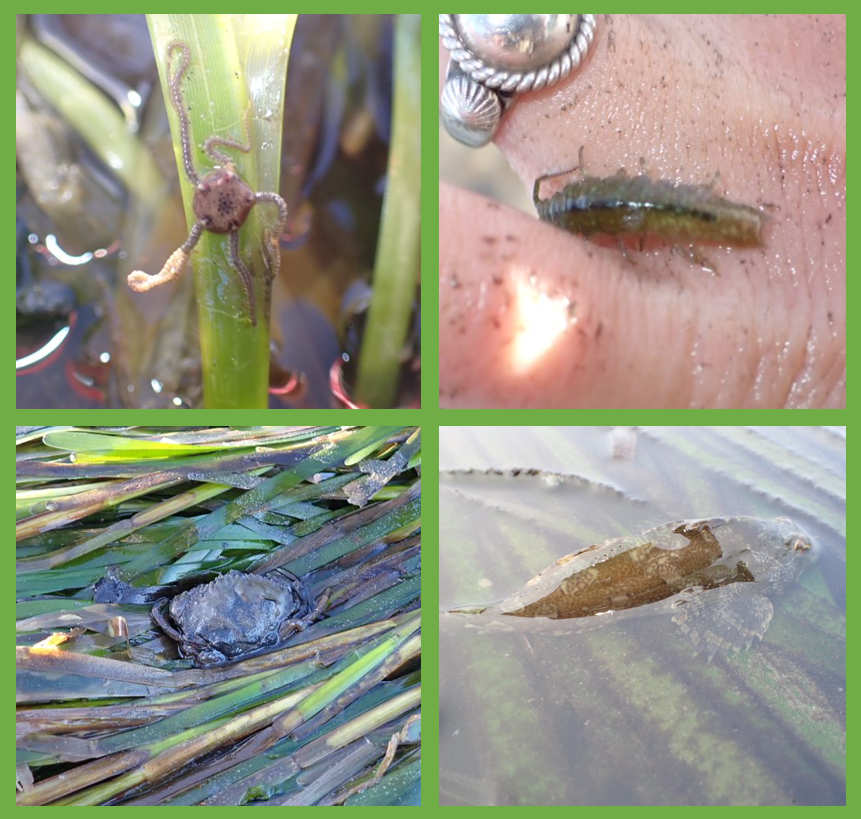
Those who’ve been around the bay for the past several years have probably noticed the recent resurgence of eelgrass. This expansion is great news for our local estuarine creatures, many of which spend a large part of their lives in these beds. Eelgrass provides essential habitat for numerous invertebrates like sea snails, nudibranchs, and crabs as well as serving as a nursery for several species of fish.
A major highlight of eelgrass monitoring is always the creatures we encounter. This serves as a great reminder that we’re not the only ones who appreciate the expansion of eelgrass beds!
The work doesn’t end with the incoming tide
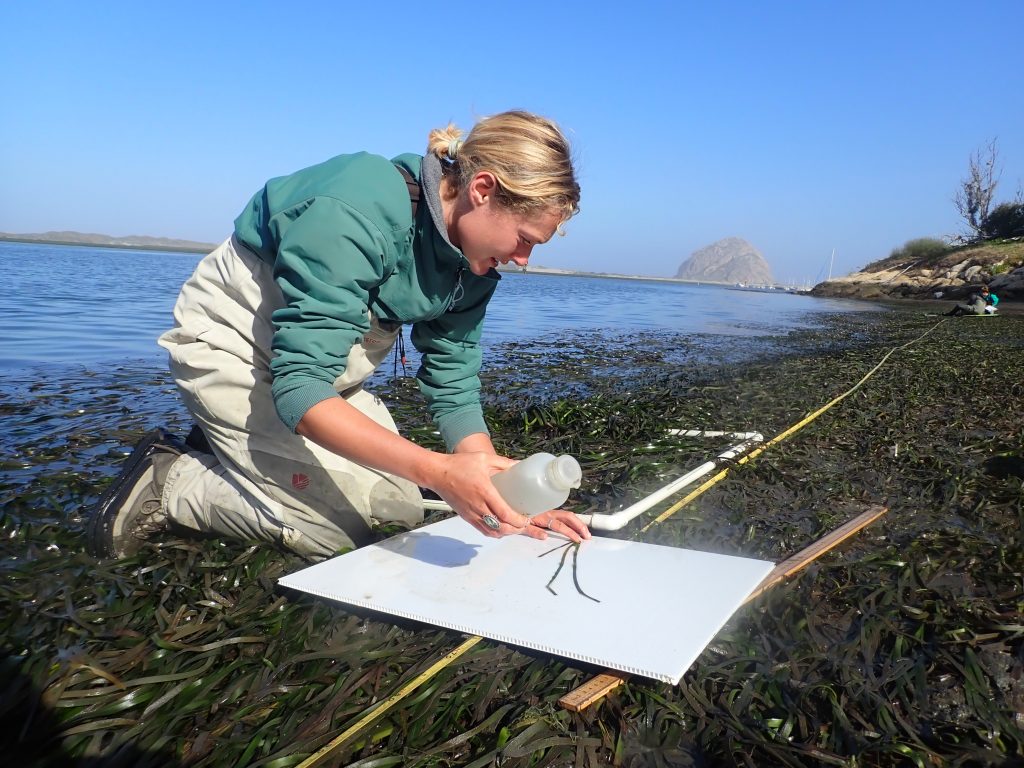
While we wrapped up the last Bed Condition survey for the year in June, the work is not yet over! Analysis of our eelgrass photos provides a wealth of data. In the field, we lay the eelgrass blades out flat against a large poster board that provides a blank background, allowing the details of each blade to be easily distinguished. We also take detailed notes on the condition of the blades, which provide valuable context for those viewing the photos later.
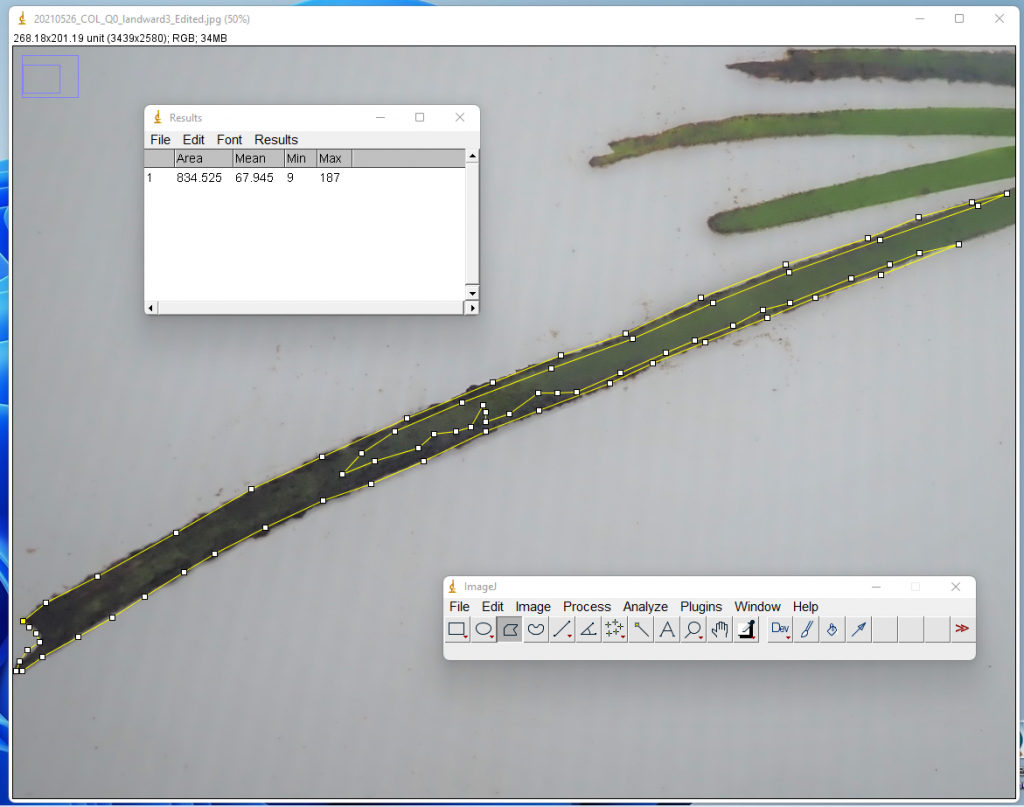
After the fieldwork is complete, Estuary Program staff process the photos to determine things such as the area of each blade covered in small plants or algae (epiphytes), the area decaying or eroding, and the area covered by small invertebrates (epifauna). We store the details from the processed images in a database, which we then use to track fine-scale changes in eelgrass health over time.
Eelgrass condition is not uniform across the estuary
Another interesting takeaway from the photo data are the comparisons that can be made between different eelgrass beds. Estuarine systems are highly complex and are composed of many smaller microhabitats that result from various chemical, physical, and biological gradients that change across the length of the estuary. These changes are felt by the eelgrass too and can result in differences between beds.
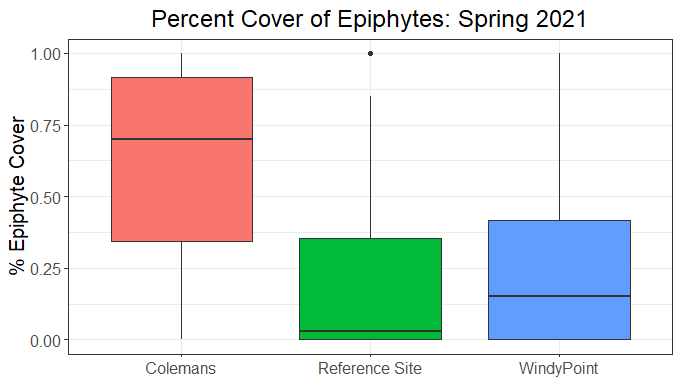
For example, epiphyte coverage is typically much higher in the Front Bay. The most likely explanation is that eelgrass beds in the Back Bay are more heavily grazed and the blades are consumed before algae and small plants can cover them. In the figure above, the site that is closest to the mouth of the bay, Coleman Beach, has significantly higher epiphyte cover than the two sites found further back in the estuary. Fortunately, the presence of epiphytes at Coleman does not appear to be negatively impacting the health of the bed.
As the spring tide window comes to a close, the Estuary Program will continue to process photos and explore the data, gaining insight into eelgrass condition and assessing how this impacts the estuary as a whole.
Help us protect and restore the Morro Bay estuary!
- Donate to the Estuary Program today and support our work in the field, the lab, and beyond.
The Estuary Program is a 501(c)3 nonprofit. We depend on funding from grants and generous donors to continue our work. - Support us by purchasing estuary-themed gear from ESTERO. This locally owned and operated company donates 20% of proceeds from its Estuary clothing line and 100% of Estuary decal proceeds to the Estuary Program. Thank you, ESTERO!
- Purchase items from the the Estuary Program’s store on Zazzle. Zazzle prints and ships your items, and the Estuary Program receives 10% of the proceeds.
Thank you for helping our beautiful, bountiful, and biodiverse bay.